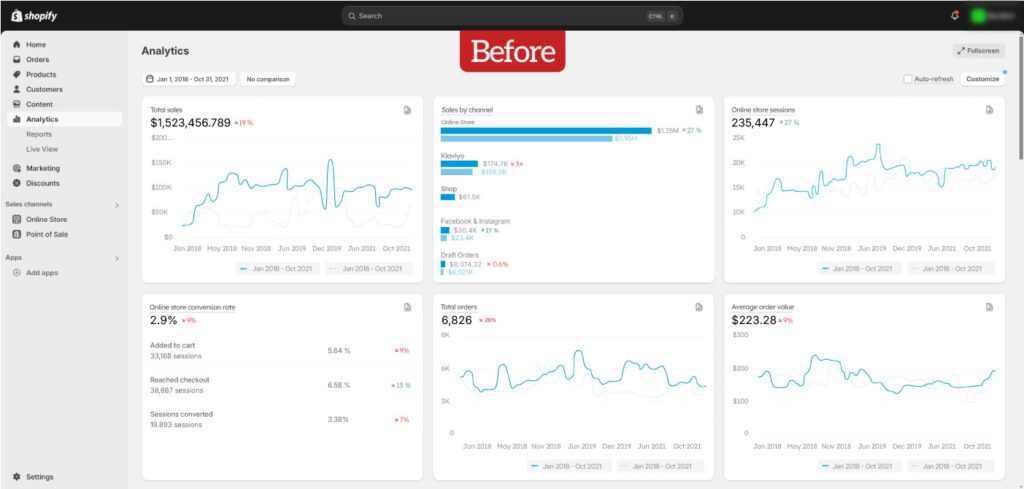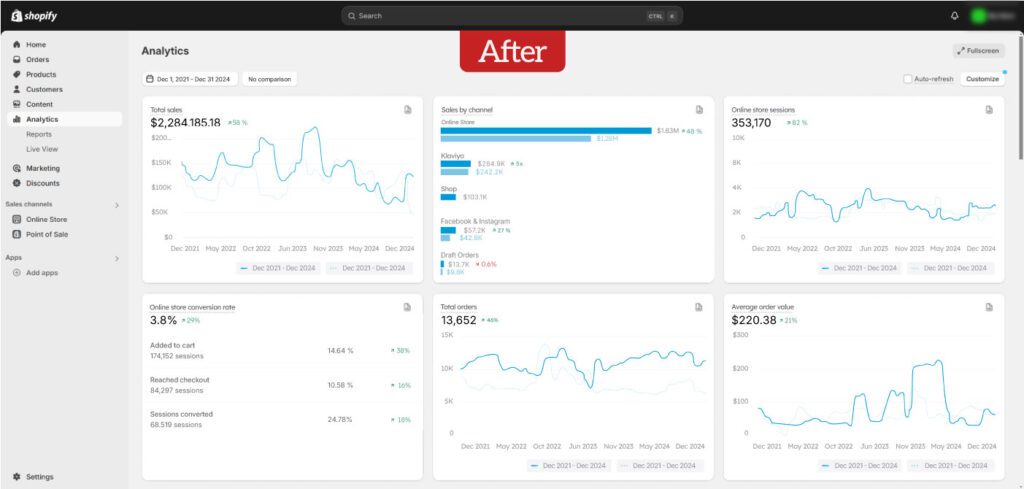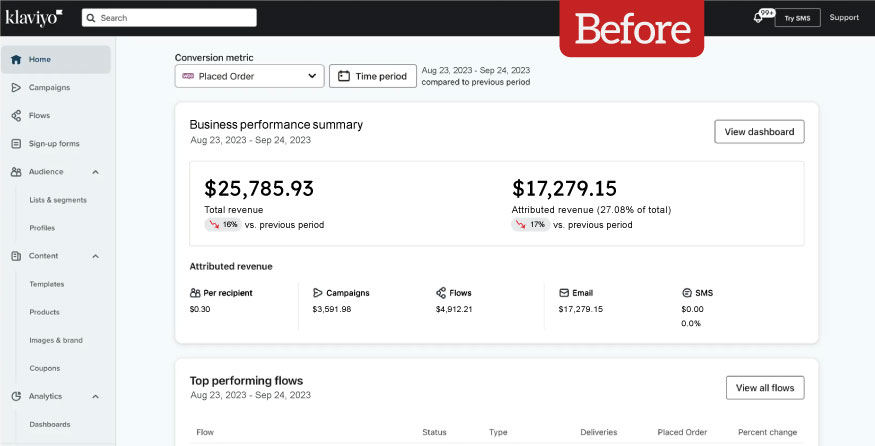Case Study
How a leading consumer goods e-commerce store boost CVR by 25% by integrating Triple Whale

Results
25.8%
CVR
20%
Reduced bounce rate
15%
Increase in average time spend (on product pages)
50%
Increase in Customer Engagement
Meta Results
Sales Rebound:
The implementation of strategies (described below) led to a significant recovery in sales, with a steady upward trend observed over the following months.
Increased Customer Engagement:
The loyalty program resulted in a 50% increase in customer reviews, greatly enhancing the site’s credibility and trustworthiness.
Improved User Experience:
The reorganization of product pages reduced bounce rates by 20% and increased the average time spent on product pages by 15%.
Higher Conversion Rates:
The addition of detailed product specifications contributed to a 25% increase in conversion rates, as customers felt more confident in their purchasing decisions.
Client Background:
Our client, a prominent enterprise in the consumer goods e-commerce market, had been experiencing a noticeable decline in sales. Despite having a wide product range and substantial website traffic, they were unsure about the factors contributing to the downturn.
Challenges Identified:
- Lack of integrated customer tracking software, relying solely on Google Analytics
- Low customer engagement and reviews
- Unorganized product pages leading to customer frustration
- Insufficient product information causing uncertainty in purchasing decisions
Our Approach:
To address these challenges, we performed a thorough analysis of the client’s website and customer engagement strategies. Our goal was to modernize their online presence and enhance customer re-engagement through targeted campaigns.
Tools & Analysis:
01
Triple Whale Integration:
We integrated Triple Whale to provide an all-rounded view of customer behavior and engagement. This tool allowed us to monitor customers more effectively and identify key areas where improvements were needed.Triple Whale’s insights revealed gaps in customer tracking and engagement, which were not being fully addressed by Google Analytics alone.
02
FullStory Session Analysis:
Using FullStory, we analyzed user sessions to understand where customers were experiencing friction. The data showed that customers were frustrated by the lack of organization on product pages, as they had to sift through long lists to find what they were interested in.
03
Review Incentivization through Loyalty Offers:
We noticed that while customers were interested in reading reviews, they were reluctant to leave their own. To address this, we introduced a loyalty program that rewarded customers with bonus points on their next order in exchange for honest reviews.This strategy significantly boosted the number of reviews, enhancing social proof and customer trust.
04
Product Page Optimization:
Based on our FullStory analysis, we reorganized the product pages to categorize items more effectively. This made it easier for customers to find what they were looking for, reducing frustration and improving the overall shopping experience.
Additionally, we added detailed specification tables and technical features at the bottom of product descriptions. This content optimization provided customers with the necessary information to make informed purchasing decisions, building trust and satisfaction.



